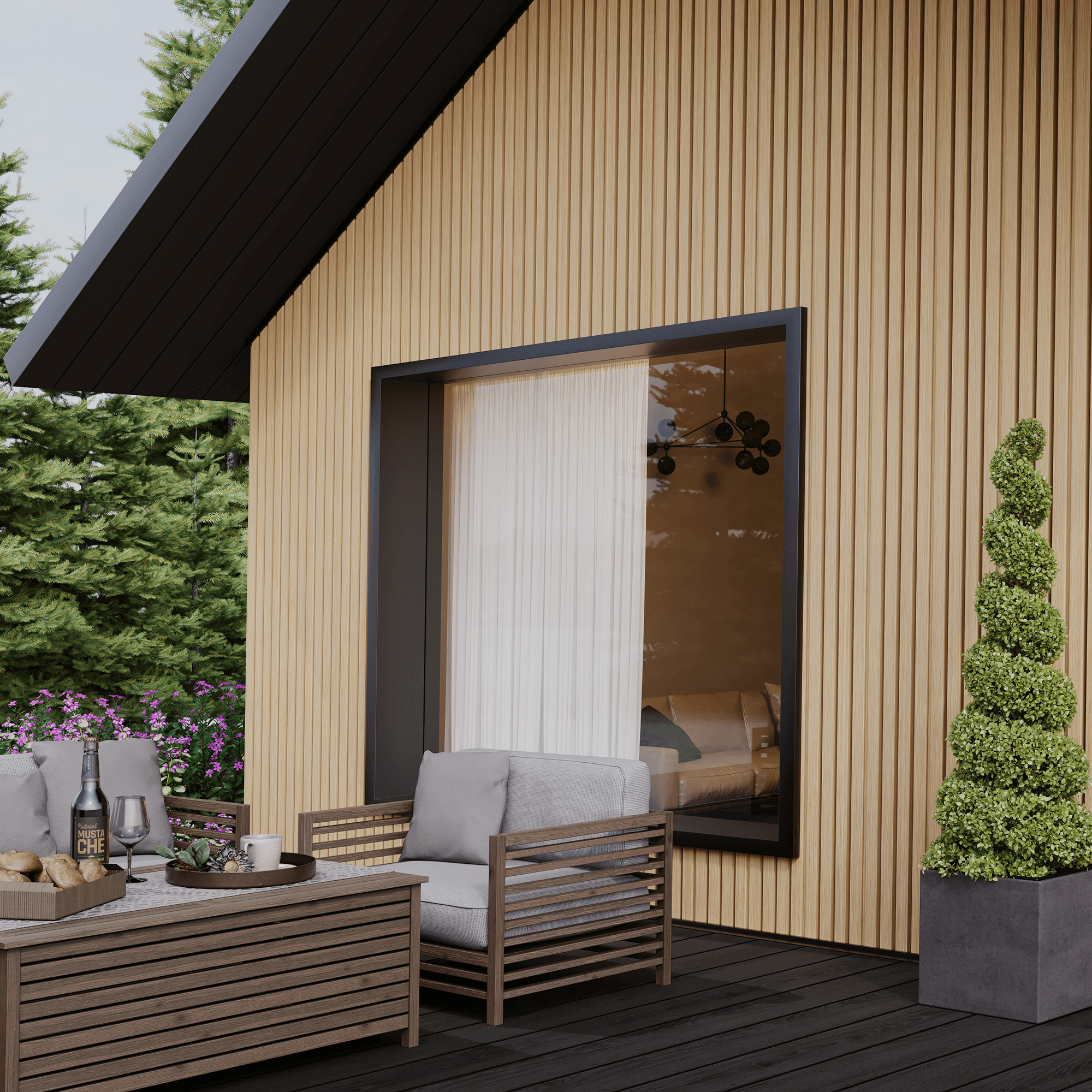
Do You Need Planning Permission for Cladding?
If you’re considering installing cladding on your home or in the garden, you’ve probably asked the question, ‘Do you need
Products in Stock
Lowest Prices
Express Delivery
10-Year Warranty
December Sale. Up To 15% Off.
If you’re thinking about redecorating your home with some cladding, you probably already know that it can provide extra insulation, protection from the weather, and bring a sleek and stylish aesthetic. Cladding can come in a range of different materials, with composite cladding being a relatively new but increasingly popular option. But how long does composite cladding last, and what are the benefits of using composite cladding materials compared to all the other types of cladding?
One of the main benefits of composite cladding is its toughness and durability. The unique properties of composite cladding material make it resistant to damage and able to withstand the toughest weather conditions, plus its durable materials also aid in increasing energy efficiency in the household. This composite cladding durability also ensures that it will continue to look great and offer superior protection for a long, long time. Whilst composite cladding may fade slightly over time, it is easy to maintain, with no need for painting or other treatments. As it’s made from a combination of plastic and recycled materials, it also presents an eco-friendly option.
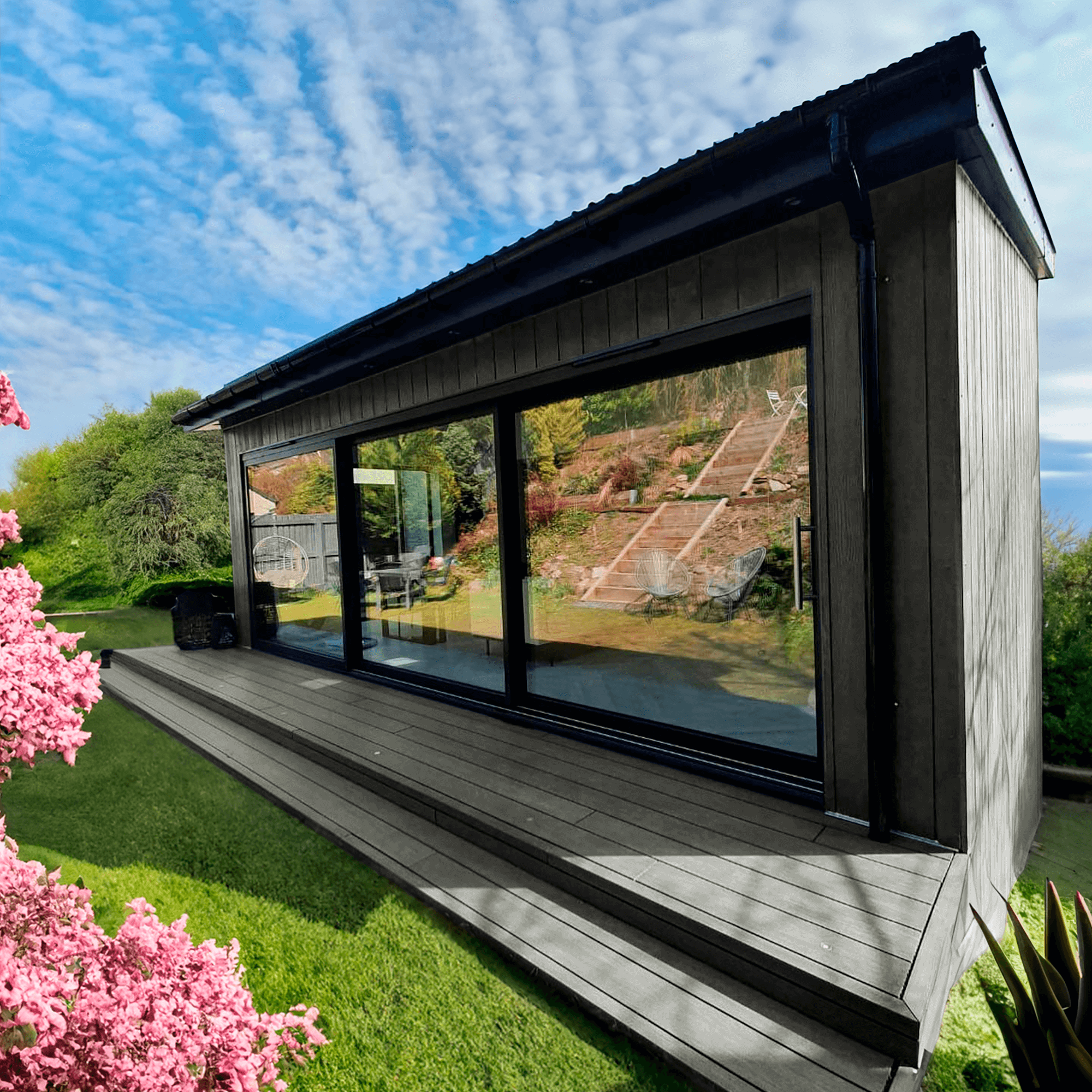
Just like other composite material products such as composite decking boards and composite balustrade, composite cladding is made from an innovative blend of wood fibre and plastic. Specifically, Dino Decking’s composite cladding uses 55% eco-friendly recycled wood, 40% HDPE (high-density polyethylene), and a 5% mix of additives.
This specially engineered combination results in a material that offers the aesthetic appeal of wood with a number of additional benefits. Composite material is longer lasting and is far more resistant to weather, warping and other damage. The colour is ‘built in’, so it doesn’t need to be painted or stained and is much easier to maintain.
The two main types of composite cladding are capped and uncapped. Any type of composite material is durable and weather-resistant, but capped composite cladding, just like our capped composite decking, has an additional polymer sleeve around the outside to provide even more protection. Capped composite cladding can cost a little more upfront compared to uncapped alternatives, but the added durability and water resistance can more than pay for itself in the long run.
At Dino Decking, we use a proprietary Dino Shield™ polymer sleeve to add unmatched durability and superior resistance to the worst the weather can throw at it – crucial for cladding on any property in the UK’s unpredictable climate!
As cladding is installed on the exterior of the house, all types are designed to be long lasting, and there are a number of ways to increase cladding longevity. There can be significant differences in longevity though, depending on the materials used.
Timber cladding can last for a very long time – often up to 30 years or even longer, depending on the type of wood. However, wooden cladding requires a lot of maintenance to get it to last this long, and wood also requires lots of maintenance. It generally needs to be painted, stained or treated –both during the installation process and at regular intervals afterwards. Wood can also be vulnerable to damage or adverse weather.
Composite cladding can easily last for 25 to 30 years or longer, with very little maintenance. All that it really needs is a routine cleaning a couple of times a year to keep it in tip-top condition. Composite cladding also has a high tolerance for adverse weather and damaging elements such as mould and rot, especially when it’s capped like Dino Decking’s products.
PVC cladding will typically last for 20 to 30 years, or sometimes longer. When comparing composite vs PVC cladding, both are relatively lightweight and low maintenance. However, PVC cladding can stain or fade very quickly. It is also one of the least environmentally friendly options.
Fibre cement cladding can be extremely long lasting. It can last for 50 years, and some providers even claim that it could last for 100 years. When considering composite vs fibre cement cladding though, there are a number of other considerations. Like timber, fibre cement cladding takes a lot more maintenance to uphold its look and performance, and it may need a full repaint every five to 10 years. It is also heavier and can be more difficult to install initially.
Composite cladding durability and longevity stem from the way that the composite material is scientifically designed and engineered. This manufacturing process results in a very firmly blended mix of plastic and recycled wood fibre that provides a beautiful finish with unmatched strength and toughness. The plastic element adds extra durability and resistance to moisture and rot, while the wood adds natural strength and beauty. A capped product such as Dino Decking’s composite cladding also comes with a complete polymer coating to make it even more resistant to weathering, mould and other types of damage.
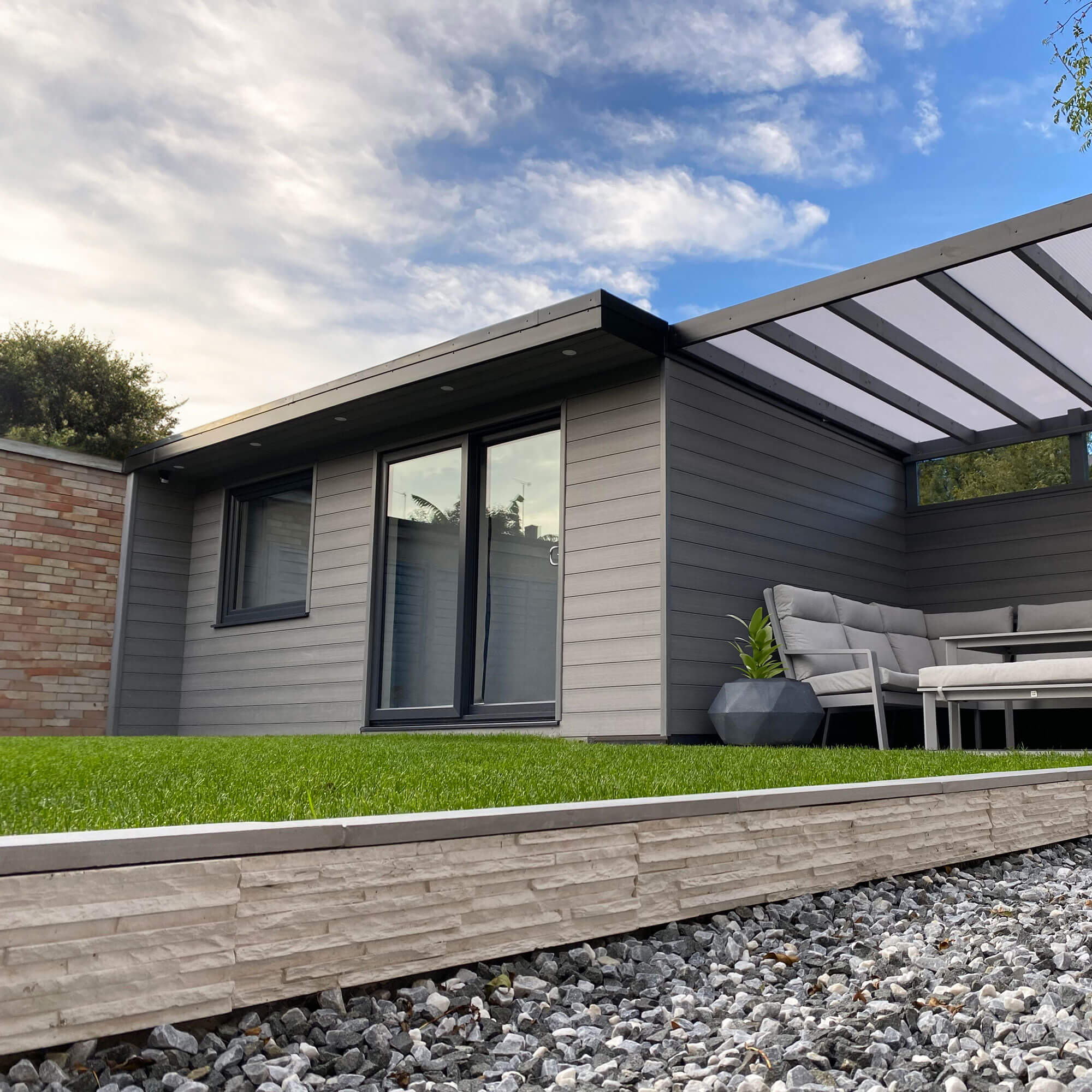
Capped composite cladding is coated with a special polymer sleeve that provides even more protection. In the case of Dino Decking products, this extra layer is known as Dino Shield™ and is the thickest, toughest polymer sleeve available in the UK. The sleeve covers both sides and the edges of the cladding, providing superior resistance to moisture, damage and mould. Uncapped composite cladding does not have this additional barrier, though it does have the durability and benefits common to composite materials in general.
Uncapped cladding may be a little cheaper when considering the initial outlay on materials. The extra durability and protection offered by capped cladding makes it a better long-term choice, however. It can increase the lifespan of your cladding and decrease the overall costs, which is why Dino Decking’s cladding is made and supplied with this extra protection as standard.
Most traditional cladding materials need a lot of maintenance to keep them in top condition. Timber and fibre cement cladding, for example, may need to be completely resealed, restained or repainted every few years – as well as regular cleaning. Composite cladding doesn’t need that level of maintenance and only has to be washed once or twice a year to keep it looking fresh. Read our guide to find out more about cleaning different types of cladding.
There are a number of different options available, but composite cladding is definitely worth consideration. This is due to its relatively low lifetime cost compared to some other materials and its very high lifespan, especially with the comparatively low level of maintenance required to achieve that longevity.
Composite cladding does have some downsides, including a higher initial cost compared to some cladding materials. You might also be wondering, does composite cladding fade? Some fading can occur over time, but colour retention technologies such as UV inhibitors and fade-resistant pigments will tend to keep this to a minimum.
If you’re considering cladding for your home, one of the main questions you’ll want to consider is, ‘how long does cladding last?’ The answer very much depends on the type of cladding used, but composite cladding is becoming more and more popular due to its overall longevity and other clear benefits. Capped composite cladding offers the best combination of lifespan coupled with sustainability and ease of maintenance that you can find.
If you’re considering cladding for your home, take a look and see what our range of composite cladding has to offer.
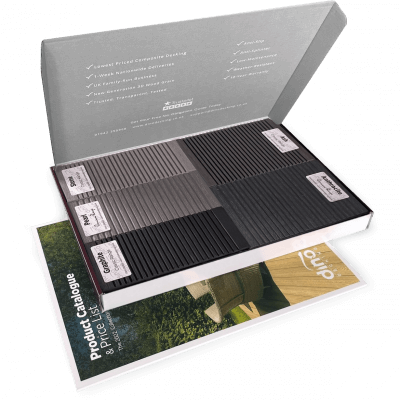
Our sample pack contains a sample piece of each colour currently available. Order your free sample pack today to compare the colours and get a true feeling of the Dino Decking range!

If you’re considering installing cladding on your home or in the garden, you’ve probably asked the question, ‘Do you need
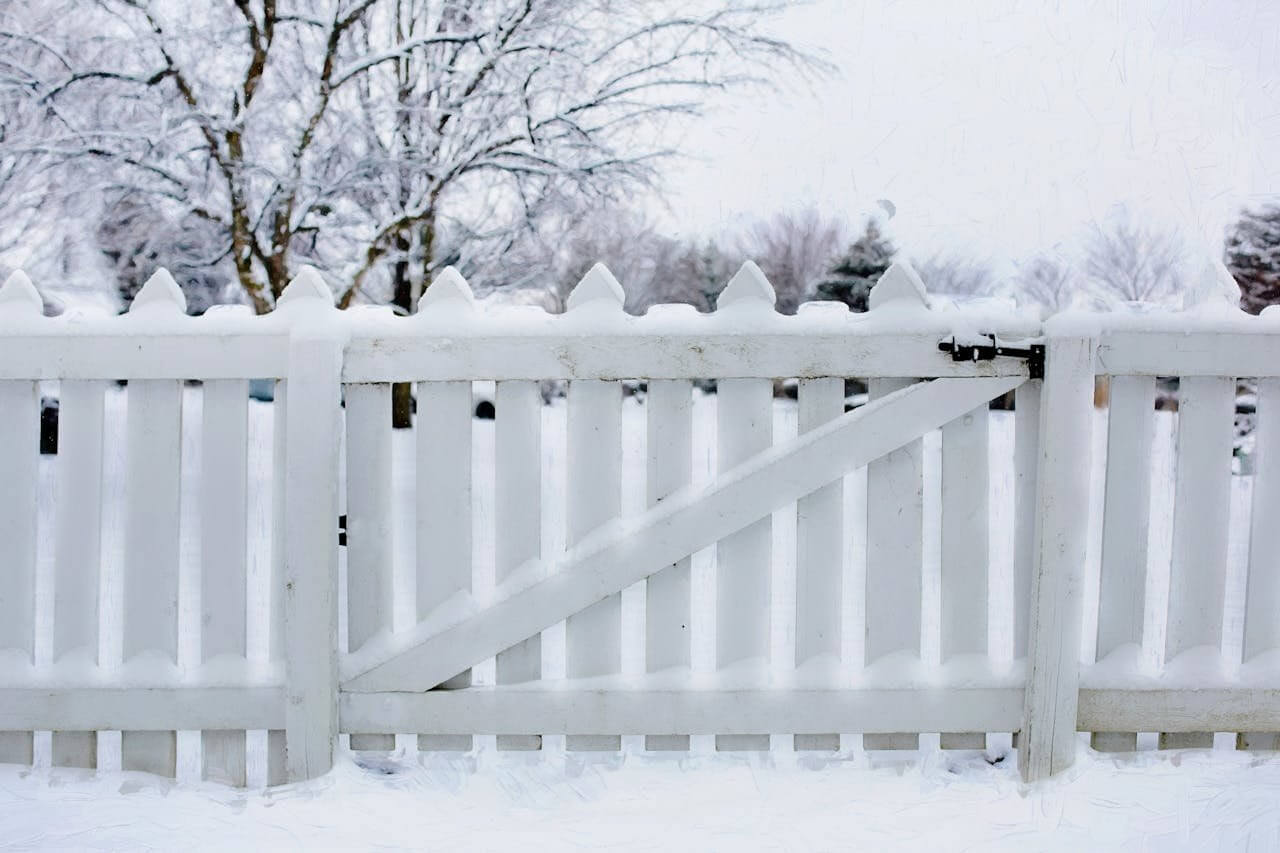
If you’re looking to go all out this festive season, you might be looking for some fantastic Christmas garden ideas